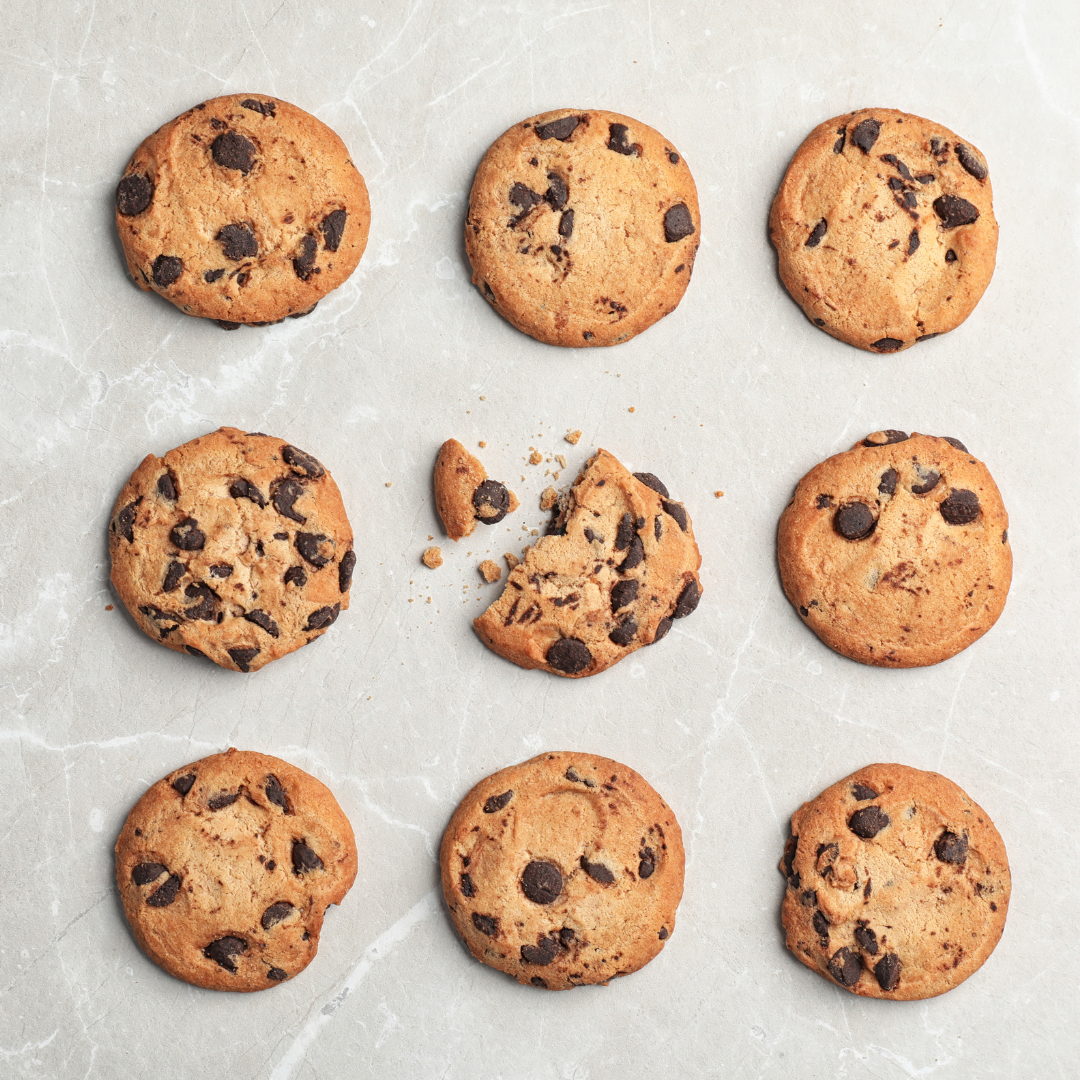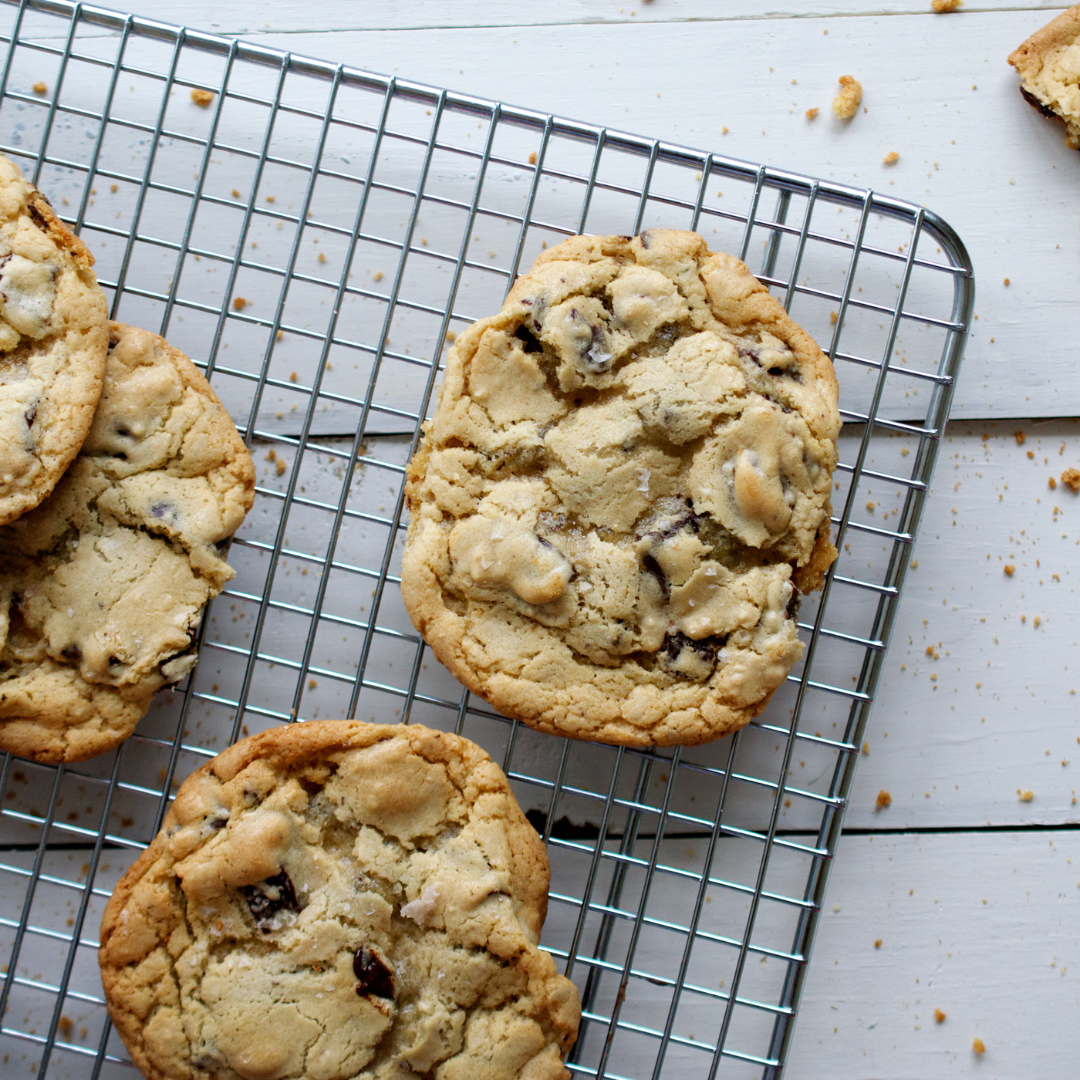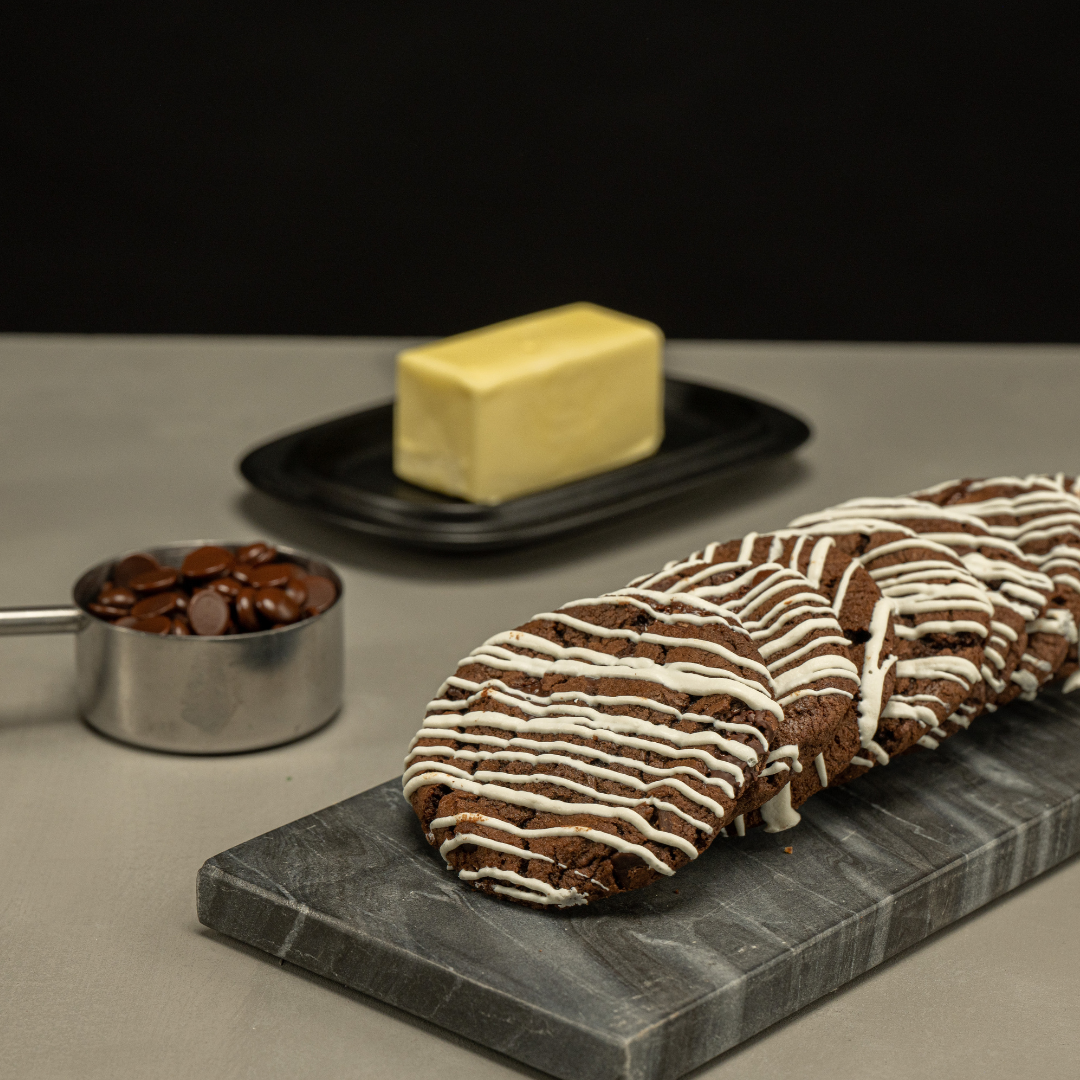If your chocolate chip cookies look like they should be served with bacon, scrambled eggs, and a dash of syrup, you have wandered into a very common area of mishap.
You are most certainly not alone. Flat chocolate chip cookies are an extremely regular occurrence, being one of the most frequently searched cookie-related terms on the internet. It is frustrating for so many people and yet we share your pain, as we have been there ourselves many times. More times than we care to remember, actually.
There is good news, however. As soon as you have mastered a few key tips, procedures, and techniques, you will be fine, going forward. Achieving cookie perfection is almost like riding a bike, once you know the potential pitfalls to avoid it becomes second nature and fresh, plump, thick cookies full of verve will never elude you again.
So fear not, The Cravory has your back as the arch enemy of all things flat and horrible. We have not just one or two, but ten tips on how to avoid miserable, flat, downright lifeless cookies.
Let's take a look at the most typical reasons for cookie flatness, and see if we can put you right once and for all. If you have ever caught yourself staring solemnly at a disaster-laden baking tray, asking yourself in despair “why are my chocolate cookies flat” then these tips are for you. In no particular order, by the way.
Bad Baking Soda or Powder
Baking soda or baking powder both play a part in helping the cookies rise, owing to the leavening agents within the powder. The problem is that these agents can lose their efficiency over time.
While this might seem like an obvious one, please make sure you check the expiry date. Out-of-date baking soda or powder is one of the most common reasons for flat cookies, although many people are unaware.
Chill The Dough
Another quite obvious tip that is so commonly overlooked. Now, it can get a little tricky determining how long your dough needs to be refrigerated, because certain doughs need cooling for longer, depending on your mix.
As a general rule, you should always refrigerate your dough for at least 24 hours, although we suggest a longer cooling period of around 36 hours to achieve thicker, more sturdy cookies. That said, if your dough is noticeably sticky, greasy, or wet, you might want to cool it for the maximum amount of time, up to 72 hours.
Cool Butter
The golden rule is this: when butter is too warm, it is too soft. When this happens, your cookies will start to spread before the bake has even started.
You should aim for room temperature - a good way to test this is by a simple finger-pressing technique. You should be leaving a small imprint on the butter. Too much of an indent, and the butter is too warm. No indent means the butter is too cool.
Freeze For 15 Minutes
Another golden rule is this: the colder the dough, the thicker your chocolate chip cookies will be. Just after you have rolled the dough into cookie-shaped spheres, give them a 10 to 15-minute ‘blast’ in the freezer. This will inject lower temperatures into the very core of the cookies, without actually freezing them, and lead to a far lower chance of spreading.
Over-Greased Baking Sheets
You will probably thank us for this later because this is another very common cause of flat cookies that most people are unaware of. Well-prepared dough should have enough fat content to prevent the cookies from sticking to your sheets. It makes logical sense that the cookies would spread slightly when the sheets are greased.
Too Much Sugar
Or possibly even not enough flour. Even worse would be both of those scenarios. Sugar will caramelize when heated. In other words, it turns into liquid. Being over-ambitious with the sugar means over-saturation of liquid in the bake, leading to flat cookies. Not enough flour will lead to an insufficient amount of rising agents, which again causes flat cookies.
Always Line Your Baking Tray
Or if you can, use a silicon mat or even simple parchment paper. This will help the cookies to ‘lock-on’ to the surface of the baking tray and reduce the chances of spreading.
Calm Down!
It is quite tempting to put in a huge amount of elbow grease when creaming the butter and sugar, but this is an area where people often get carried away, leading to flat cookies. The goal here is a quick mix just to blend the ingredients - do too much, and you will add a whopping amount of air into the mix which will weaken the structure, and cause collapse mid-bake.
Too Close For Comfort
Just like us humans, cookies do not like to have their space invaded too much and need a little ‘personal space’. Seriously though, if the cookies are not given enough room to breathe, the airflow is restricted, leading to flat cookies.
You should aim for an ideal cookie count of 12 per baking tray - unless you have a huge industrial oven of course, in which case you are a professional and probably won't be reading this post anyway. Or at least, you shouldn't be.
Allow The Sheets To Cool
Another common mistake is not allowing the baking sheet to cool down in between batches. Wait at least ten minutes before putting your second batch into the oven. You can consider this a bonus tip applicable to burnt cookies because this is a leading cause not just for spreading, but for burning the bases also.
Wrap Up
So there you have it. No need to prepare your cookie bake with both fingers crossed and a quick prayer recital to the cookie gods. All you need is the right procedure, technique, and knowledge.
These tips should help you refrain from producing pancake-flat cookies and if they don't, just keep trying - that's half of the fun, after all. Enjoy yourself, pay attention to these tips, and if it still turns out bad, remember that perseverance is the key to success!








